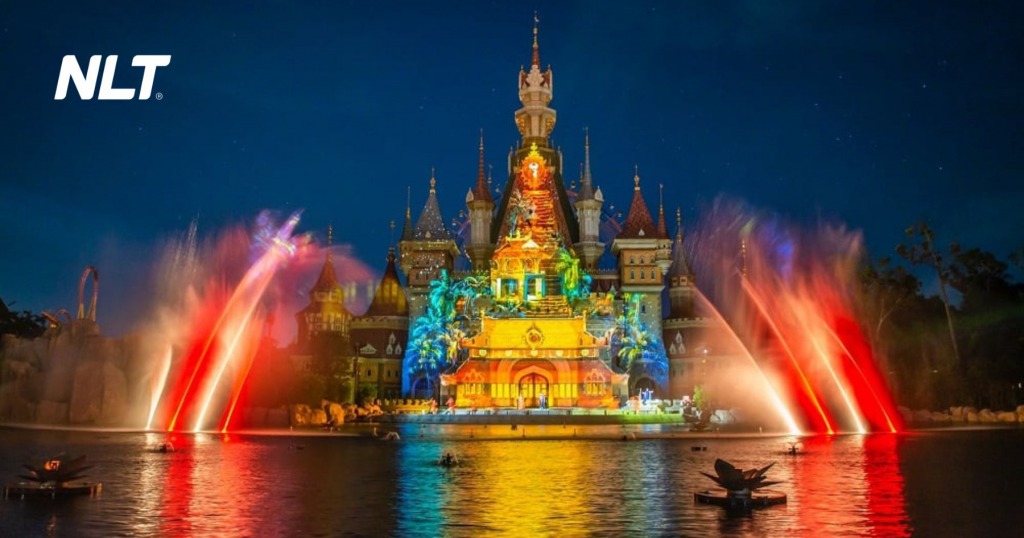Water music control technologies
The morden world we live in, technology is not only serve human but it enhance art, water foundtain seem as ironic lively synthesize with technology and emotion. After each magical moment is is a technology system control dancing fountain in exquisite, operate with accuratecy and to very small detail. This article, introduce by NLT Group, provide a great technological moving musical fountain now being implemented. At the same time, this news additionally examines” advantage and disavantage for each system, also give Recommendation to help you find out suitable solution to A project of large scale.
The roll of the controller in water fountain show
The control system serves as the “brain” of the entire musical fountain installation. It is responsible for connecting and synchronizing all components – from pumps, nozzles, and lighting to sound and programming software. Without the control system, each device would operate independently, unable to create a harmonious and unified performance. A well-designed control system not only ensures precision in effects but also delivers a deeply emotional experience for the audience. That is why fountain control technology is always one of the most carefully invested elements right from the design stage.
Classification of musical fountain control technologies
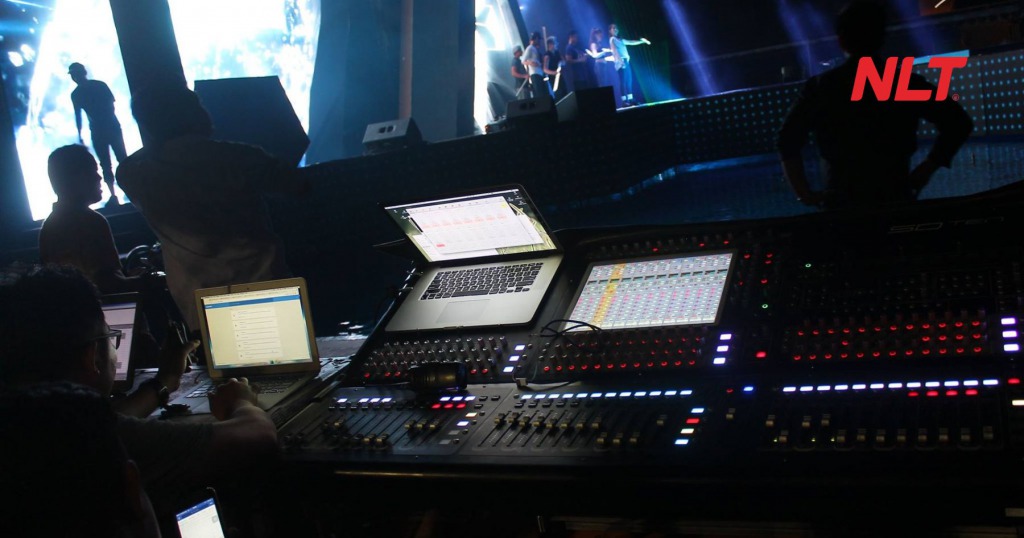
DMX Programmable Control
DMX (Digital Multiplex) is a widely used communication protocol in the lighting and stage performance industry. In musical fountain systems, DMX is employed to control RGB LED lights, dynamic nozzles, and special effects such as flame or laser shows. Each device is assigned a unique address, allowing the system to precisely control every movement and color according to the programmed sequence.
The main advantage of DMX lies in its perfect synchronization between light and music. With its fast and stable signal transmission, DMX enables the programming of complex effects to follow musical segments seamlessly, creating surprise and coherence for viewers. This system is also easily scalable and upgradable, making it ideal for medium to large-scale installations with professional performance requirements.
Industrial PLC Control
PLC (Programmable Logic Controller) is a programmable logic controller widely used in industrial automation systems. In musical fountains, PLC serves as the core logic controller, managing the operation of the entire system — from pumps, sensors, and solenoid valves to safety devices.
Its ability to execute multi-condition programming allows flexible operation under various performance scenarios.
The greatest strength of PLC control lies in its durability and continuous reliability under harsh outdoor conditions. PLC systems are typically used for large-scale outdoor fountains that require long-term, stable operation. They can also integrate with sensors to automatically adjust according to weather conditions or water levels.
Specialized Software Control Technology
Modern musical fountain control software features intuitive graphical interfaces, allowing operators to easily monitor and manage the entire system. Designers can simulate lighting and water effects synchronized with music with just a few clicks.
Beyond controlling individual devices, specialized software enables the creation of multi-layered performance scenarios with interwoven effects. Users can build detailed timelines for each device, assigning precise commands down to each second of the music track – making every performance vivid, synchronized, and emotionally engaging.
>> See also: Decoding the structure of artistic musical fountain systems – The fusion of engineering, emotion, and technology in every drop of water.
Hardware components supporting the control system
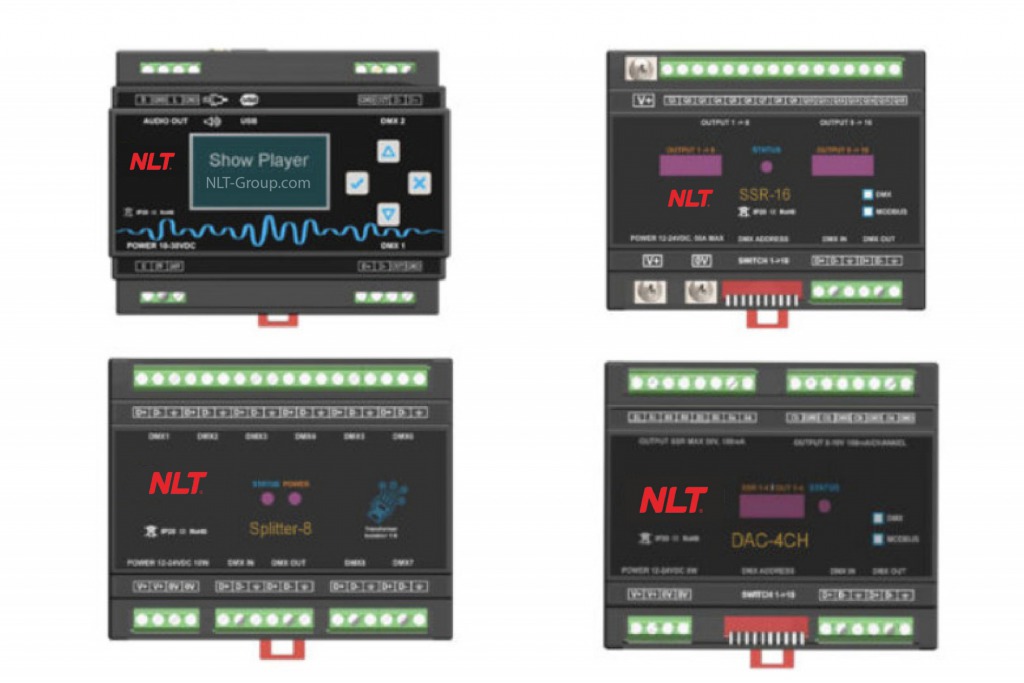
Central control cabinet and distribution Unit
The control cabinet houses the main controllers such as PLCs or DMX controllers. It supplies stable electrical power to the entire system while ensuring safe isolation between the control software and high-voltage equipment. The distribution unit receives commands from the control software and transmits them to each specific device at the precise timing required.
Signal transmission devices – relays, inverters and dimmers
These devices act as intermediaries in converting and transmitting control signals from the electrical cabinet to the nozzle or lighting system. The control relay switches the signal on and off. The inverter changes the pump’s rotation speed to adjust the pressure. The dimmer is used to change the light intensity of the light according to the music.
Water level, pressure and weather sensors
The water level sensor monitors the volume of water in the storage tank to prevent overflow or shortage. The pressure sensor ensures that the system operates within safe parameters. Weather sensors (wind and rain detectors) send signals to the control unit to automatically shut down or adjust operations when environmental conditions are unsuitable.
DMX splitters, LED control cards and pump coordinators
The DMX splitter expands the number of devices that can be controlled from a single signal source. LED control cards process color-mixing signals precisely in sync with each music frame. The pump coordination unit adjusts water pressure and flow according to each performance segment, producing dynamic movements and visually captivating effects.
How to program and build a water music script

Synchronization of water, light and music effects
At the heart of every musical fountain performance lies the perfect harmony between water movement, lighting, and sound. The programming must ensure that each water jet and every color transition aligns precisely with the rhythm of the music.
Layering effects according to musical tempo
Effects should not “explode” right from the start but be layered thoughtfully. The opening section should be soft, accompanied by ambient lighting. The climax bursts into life with high-pressure jets and dynamic lighting transitions, then fades gently toward the end to evoke lingering emotions.
Optimizing visual and emotional experience
The ultimate goal of programming is not just technical precision but emotional resonance. Each show scenario should be designed around audience behavior, viewing angles, and the intended message. A well-crafted design allows the audience not only to watch but to feel—each surge of water like a heartbeat, and every beam of light as an emotional wave spreading through the space.
>> See more: NLT Group – A trusted and professional installer of artistic musical fountain systems in Vietnam.
Practical applications in large water music projects
Sun World Ha Long – DMX combined with 3D software
At Sun World Ha Long Complex, the musical fountain system is operated through the DMX control protocol integrated with a specialized 3D simulation software. Each evening, visitors are treated to spectacular light and water performances choreographed to pre-programmed musical scores. The RGB LED system transitions colors smoothly in sync with every musical note, thanks to the high-precision synchronization capability of the DMX-based control technology. This project stands as a prime example of how DMX can transform an ordinary public square into a dynamic architectural performance space – where technology, lighting, and water motion converge to create a captivating visual experience.
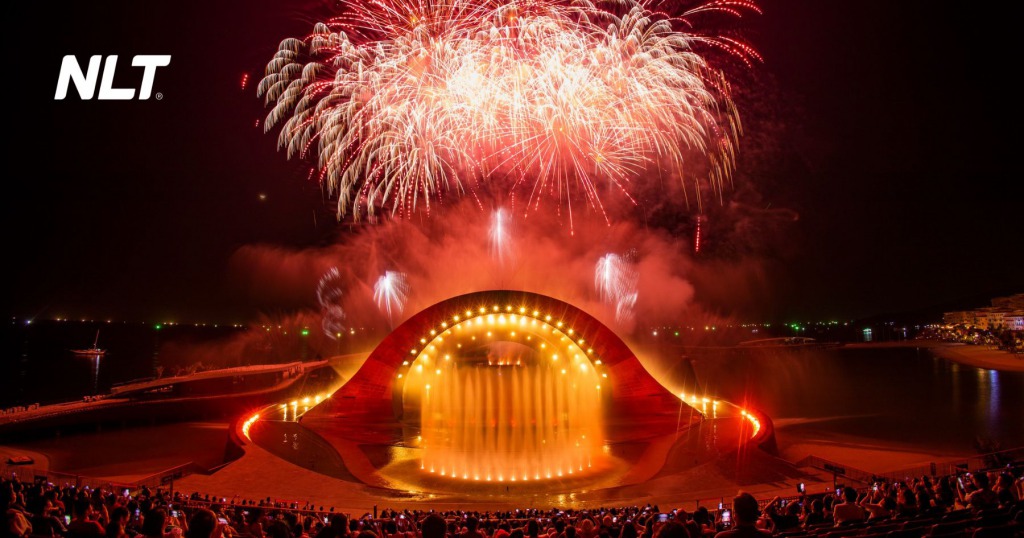
VinWonders Phu Quoc – PLC control integrated with laser light
At VinWonders Phu Quoc, the PLC control system is responsible for operating the entire large-scale water music equipment system. Not only stopping at spraying water to music, the project also integrates high-power laser projectors and water screens to project images. Thanks to logic programming from PLC, the system operates stably even in strong wind, humidity and continuous load conditions for a long time.
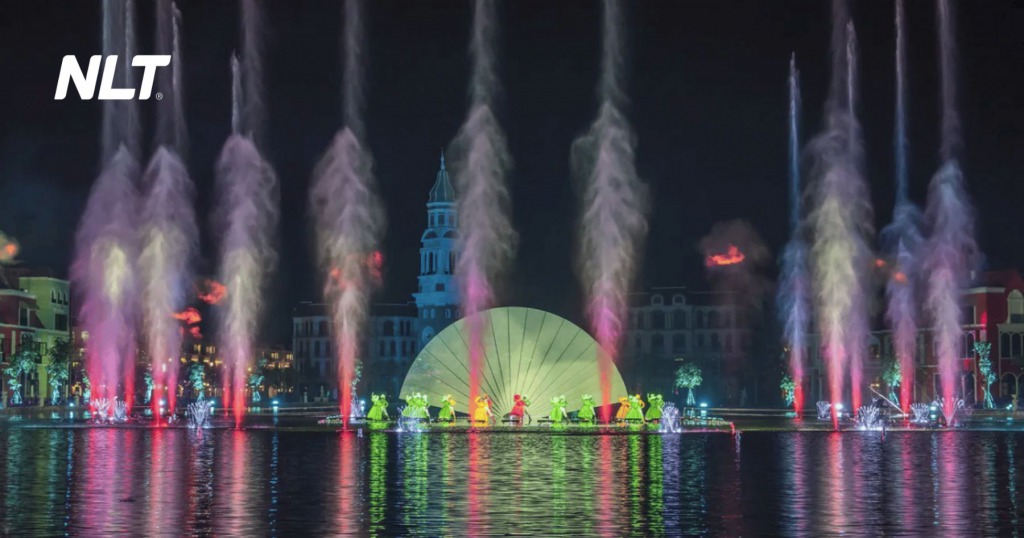
Conclude
No longer an auxiliary tool, today’s water music control technology is the “conductor” leading the entire symphony of water, light and music. From flexible DMX to durable PLC or modern SCADA, each water music control technology has its own role suitable to the scale and characteristics of each project. Choosing the right control system is a prerequisite to ensure a smooth, vivid and synchronized artistic experience. In the context of a rapidly developing smart city, investing in high-quality water music control technology solutions is the right direction for all future artistic water music projects.
Frequently asked questions (FAQs)
Which technology is suitable for small projects?
For small-scale projects such as cafes, villas or gardens, the DMX control system is the ideal choice. DMX is easy to program, low cost and can be integrated with LED lights, simple nozzles while still ensuring beautiful effects.
Does the control system require regular maintenance?
Yes. Although modern control devices have a long life, they still need to be checked and maintained periodically every 6 to 12 months to ensure stable operation and avoid unexpected errors during the performance.
How to program different songs?
The designer can create many different scenarios in the dedicated software, each scenario corresponding to a music track. Just select the correct corresponding presentation file and synchronize the effects, the system will play the correct scenario in real time.
Can the system restart automatically during a power outage?
Professional systems often incorporate an uninterruptible power supply (UPS) or automatic restart after a power outage. However, this needs to be properly designed and configured from the start to avoid equipment failure.
Contact information
If you are interested in implementing an artistic water curtain system or need advice on artistic water music solutions, do not hesitate to contact NLT Group.
- Address: No. 43R Ho Van Hue, Ward 9, Phu Nhuan District, Ho Chi Minh City
- Hotline: 0911 379 581
- Email: kinhdoanh@nlt-group.com
- Website: nlt-group.com
Contact us now for free consultation and experience the most modern artistic water music solutions from NLT Group!
